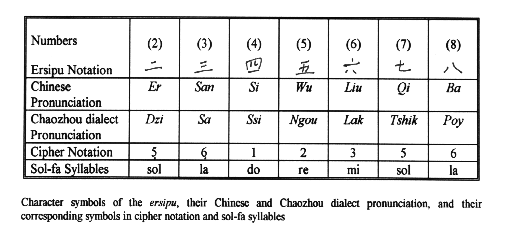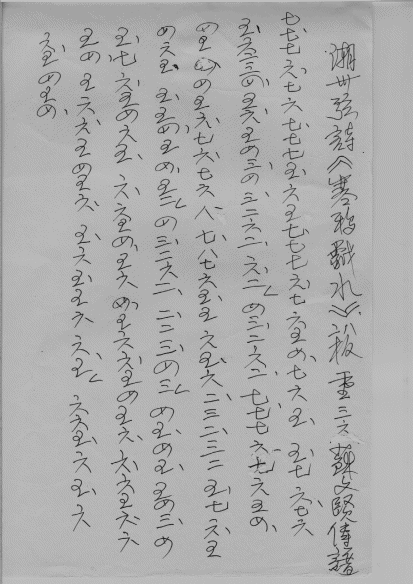


Ersipu is normally written and read from top to bottom, from right to left. Rhythmic durations of individual notes are not given, but symbols on the right of the characters indicate where it falls in the measure (i.e. where on an empty, strong or weak beat) and note grouping. Besides pitch and meter, ersipu also expresses extended concepts of mode through the use of the terms qing (``light``) and zhong (``heavy``) in connection with the strings of the zheng zither corresponding to san (6) and liu (3), and the term huo (``alive``) in connection with the string corresponding to wu (2). These terms do not appear on the notation itself but, rather, after the title of the melody, indicating the mode in which the melody is to be played. The names of the four most common modes used in xian shi yue are derived from the use of these terms which describe the action to be executed on the three mentioned strings.
Mercedes DuJunco